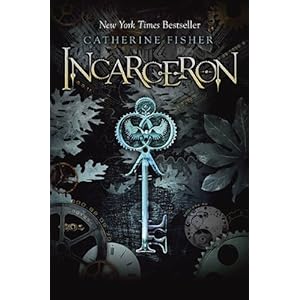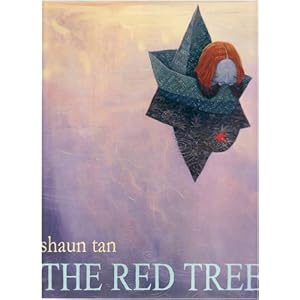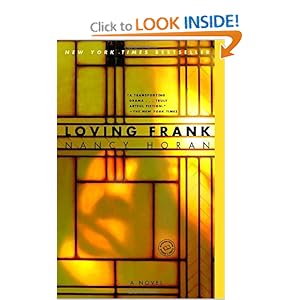I don't usually do meme... I don't have the discipline to do them regularly. But this one about reading habits from
Helen's Book Blog seems like fun! :)
Do you snack while you read? If so, favourite reading snack:
During the week, I usually read while having lunch (so not really snack) or riding the bus (no food allowed). Trying to loose weight too so usually don't have snack at home. But when I could snack, I love to read and eat cookies! But don't you hate cookie crumbs getting trapped in the binder of t he book...
What is your favourite drink while reading?
I am trying to drink more water, so usually water! But I like refreshing juice or smoothie too.
Do you tend to mark your books as you read, or does the idea of writing in books horrify you?
Since most of my books are from the library, I can't mark the books! For those I own - I don't usually mark fiction, but if it's non-fiction and I want to go back later for reference, I do high-light or underline or scribble on the side or on the front page or back page. When I bought second hand book, it's kinda fun to read what the previous owner(s) have written :) Though I have seen some books I borrowed from the library (seemed like mostly books written in Chinese) where people would correct the typo!
How do you keep your place while reading a book? Bookmark? Dog-ears? Laying the book flat open?
Again, since I borrow from the library, I don't want to dog-ears books. In fact, I yelled at my sister for doing so :) Nowadays since I blog my reviews, I will usually have a blank piece of thick paper as my bookmark, where I can jot down the page number for quotes and thoughts.
Fiction, non-fiction, or both?
Both. Last couple of years were 70% non-fiction. This year I'm expanding my fiction genre. So I'm thinking it'd be 50-50. So far I've read 12 non-fiction and 23 fiction (excluding 3 graphic novels, as I have no idea if they should fall under fiction or non-fiction).
Are you a person who tends to read to the end of a chapter, or can you stop anywhere?
While I read at lunch, I tend to finish a chapter. During the bus ride, pretty much just anywhere at the end of a paragraph (easier to find the spot again) - though I try to stop at the spot where it has a big physical printing gap in the paragraphs if possible, since it makes it even easier to pick off where I left it. I'd been falling asleep lately while reading in bed before sleep... so wherever my eyes involuntarily closed (I wish I could stay up late to read every night.)
Are you the type of person to throw a book across the room or on the floor if the author irritates you?
I do it mentally. But, I respect the books I borrow from the library so I don't do that. For the books I bought, I'm too stingy to destroy a book I paid for!
If you come across an unfamiliar word, do you stop and look it up right away?
When I first moved to Australia as a teenager, with English not being my first language, I'd do that. But I found it really take the fun out of reading (and disrupting) as I had to stop way too often! Nowadays, I only look it up if it's something critical to understand the story. Most of the time I could guess (though I suppose if I guess wrong I wouldn't know it!)
What are you currently reading?
Almost finish with
Loving Frank by Nancy Horan - April book club read. Need to get it read by Tuesday! Too many to choose from for the next book... I wish I can read faster!
What is the last book you bought?
A bunch of books from the library book sale before my vacation to Hong Kong and Guam - thought I'd take them with me on the trip. Some of them are:
Dibs in Search of Self by Virginia Axline,
Is There No Place On Earth for Me? by Susan Sheehan,
Miracles Happen by Mary Kay Ash,
To Engineer is Human: The Role of Failure in Successful Design by Henry Petroski and
Politically Correct Bedtime Stories: Modern Tales for Our Life and Times by James Finn Garner.
Are you the type of person that reads one book at a time, or can you read more than one?
Mostly one book at a time. Every so often may have two going on - e.g. if I'm about to finish one, I'll bring a new book to work the next day instead so I won't run out of books to read!
Do you have a favourite time/place to read?
I pretty much always have a book with me. But if I have a choice - on a comfy couch, next to the window, with the gentle sun shinning through the sheer curtain creating a soft-box effect (soft lighting.) With a refreshing drink and cookies nearby :) No interruption please! Oh and some comfy cushions and a blankkie.
Do you prefer series books or stand alones?
Don't really have a preference. Probably read more stand alones. Some long series I'd been reading had gone done hill (looking at you, Ms. Patricia Cornwell... I'd loved
Dr Kay Scarpetta so much - that I could really identify with her (though I'm not quite as smart and don't have a medical degree) - but now, she and her friends disappoint me... and the storyline became too Hollywood-like.
Is there a specific book or author you find yourself recommending over and over?
Since I kinda have a different reading taste to others (tend to prefer non-fiction and not many people like it), I tend to recommend fiction only, such as
The Help and
Still Alice and
The Hunger Games. Books that took me by surprise and affect me personally. If people want to start reading non-fiction, I typically recommend starting with memoir (sometimes the truth is stranger than fiction) like
The Glass Castle and
Running with Scissors.
How do you organize your books? (by genre, title, author's last name, etc.)
My own books are still in boxes and not unpacked (long story...). For the large number of library books I borrow, I organize them into piles of fiction, non-fiction, YA and others. Then for each stack, I organize it by the ones I want to read the most on top. Then if I find out I need to return certain book sooner (i.e. can't renew), then I put them on the very top. I don't always read them in order, as I choose the next read based on my mood.
How about you? Would love to know about your reading habits too! Post a link! :)
































